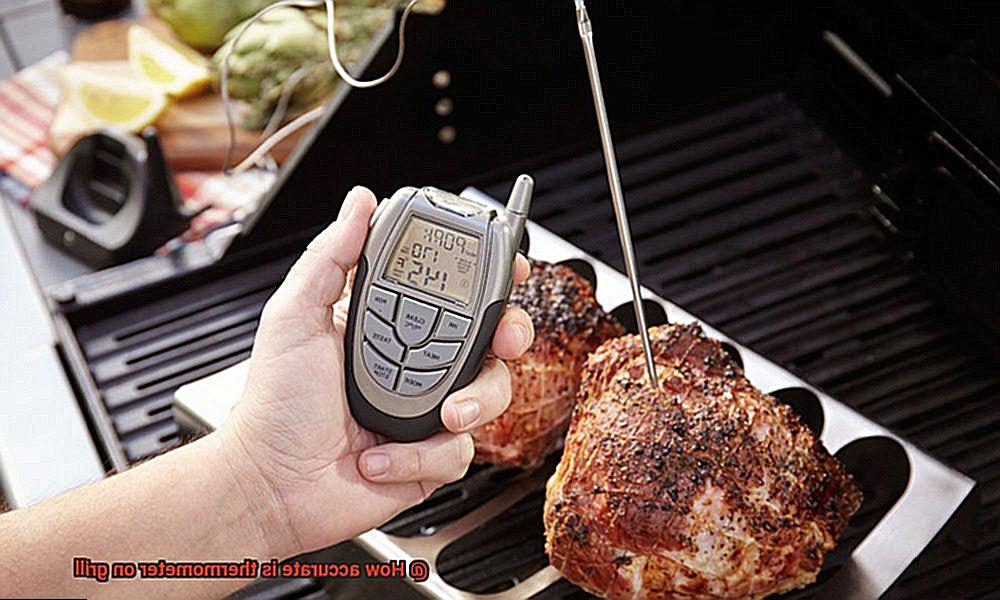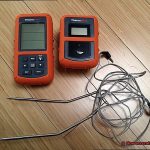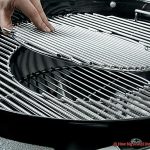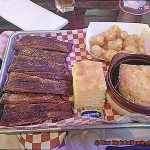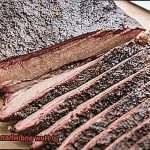Ah, the sweet smell of summer grilling. There’s nothing quite like cooking up some juicy burgers, perfectly seared steaks, or charred veggies on the grill. Of course, we all know that keeping an eye on food temperature is crucial to avoid foodborne illnesses. But have you ever stopped to consider how accurate your trusty grill thermometer really is?
After all, a thermometer is only as good as its accuracy. And when it comes to grilling, accuracy is key to achieving the perfect level of doneness and ensuring your food is safe to eat. So let’s dig into the nitty-gritty of grill thermometer accuracy.
First things first: not all thermometers are created equal. Digital thermometers are generally considered more accurate than analog ones. But even with a digital thermometer, placement matters. Where you position the probe can impact the temperature reading it gives you.
So how do you make sure your grill thermometer is giving you an accurate reading? We’ll cover that in this post, along with some common causes for inaccuracies and tips for getting the most precise temperature readings possible.
So whether you’re a seasoned grilling pro or just starting out, join us as we explore the fascinating world of grill thermometer accuracy. Grab a cold drink and get ready to cook with confidence.
Contents
What is a Grill Thermometer?
Grilling is more than just a cooking method, it’s a way of life. But it can be daunting for beginners to get the perfect temperature for their meat. Luckily, a grill thermometer can take the guesswork out of grilling.
At its core, a grill thermometer is a device that measures the temperature of your grill or the meat you’re cooking. It has a metal probe and a display unit that shows the temperature readings. You can choose between two types of grill thermometers – analog or digital. Analog thermometers use a dial to show the temperature, while digital thermometers use an LCD screen.
Grill thermometers come in different styles and types, depending on their purpose and placement. Some are built-in to the grill lid, while others are portable and can be clipped onto the grate. Instant-read thermometers give quick readings and leave no trace on the meat, while leave-in thermometers stay in the meat while it cooks.
Using a grill thermometer is crucial when cooking meat on a grill, as temperature plays a critical role in determining whether the meat is cooked properly or not. Overcooked or undercooked meat can be unsafe to eat, causing food poisoning or other health problems.
However, keep in in mind that the accuracy of your grill thermometer can vary depending on factors like its location on the grill, calibration, and weather conditions. It’s important to regularly calibrate your thermometer for accurate readings and invest in a high-quality model if possible.
Factors That Impact the Accuracy of a Grill Thermometer
Grilling is an art that requires precision, and temperature control is crucial to achieving that perfect sear or char. It’s essential to use a grill thermometer to ensure that your food is cooked to the right temperature and safe to eat. However, not all grill thermometers are created equal, and various factors can impact their accuracy.
The placement of the thermometer can significantly affect its accuracy. A thermometer placed too close to the heat source will give you a higher temperature reading than the actual temperature of the grill’s cooking surface. Similarly, a thermometer placed too far away from the heat source will give you a lower temperature reading. To ensure accurate temperature readings, place the thermometer in the thickest part of the meat or fish you’re grilling. If you’re cooking multiple items simultaneously, place the thermometer in the thickest part of each item.
Calibration is also important for accurate readings. Over time, thermometers can lose their accuracy due to wear and tear or exposure to extreme temperatures. Fortunately, calibrating your thermometer is easy – fill a glass with ice water and insert the probe into it. The thermometer should read 32°F (0°C). If it doesn’t, adjust it according to the manufacturer’s instructions.
There are two main types of grill thermometers: analog and digital. Analog thermometers are less expensive but less accurate than digital ones. Digital thermometers offer more features, such as programmable alarms and timers. Consider which type fits your needs best.
The quality of the thermometer can also impact its accuracy. Cheaply made thermometers may not be as accurate as higher-quality ones made with better materials. Look for one made with high-quality materials such as stainless steel or tempered glass. These materials are more durable and less likely to break or wear down over time.
Location of the Thermometer
Then listen up because the location of your thermometer on your grill is a crucial factor that can affect the accuracy of temperature readings and ultimately the quality of your food.
Most grills come with a built-in thermometer located on the lid or hood of the grill, making it seem like an easy spot to measure the temperature. However, this location might not be the most precise since the heat from the burners rises and accumulates at the top of the grill. This causes a higher temperature reading at the lid or hood thermometer, which is not where your food is cooking.
To get a more accurate reading of the temperature where your food is cooking, it’s crucial to use an additional thermometer placed closer to the cooking grates. Some grills come with an additional thermometer at the cooking surface level, but if yours doesn’t have one, don’t worry. Purchasing a separate digital probe thermometer that can be inserted into the meat or placed on the grates near your food is easy and cost-effective.
However, even with an additional thermometer in place, there may still be some variation in temperature across different areas of the grill. To ensure that your food is cooked to perfection, you must monitor your grill closely and adjust accordingly. This means paying attention to hot spots and cool spots and moving your food around accordingly.
Calibration of the Thermometer
Attention grill masters. A perfectly cooked meal starts with an accurately calibrated thermometer. This simple but crucial step ensures that your food is cooked to perfection, and not undercooked or overcooked. So, let’s dive into the process of calibrating your thermometer.
To start, you’ll need a pot of boiling water and ice water. Fill a pot with water and bring it to a boil. Insert your thermometer into the boiling water, making sure it doesn’t touch the sides or bottom of the pot. Wait for the thermometer to stabilize, and note the temperature reading. The boiling point of water at sea level is 212°F (100°C), so if your thermometer reads anything other than this, it needs calibration.
Next up, fill a glass with ice and water, making sure there’s enough ice to keep the water at 32°F (0°C). Insert your thermometer into the ice water, making sure it doesn’t touch the sides or bottom of the glass. Wait for the thermometer to stabilize and then note the temperature reading. The freezing point of water is 32°F (0°C), so if your thermometer reads anything other than this, it needs calibration.
Now that you have identified that your thermometer needs calibration, it’s time to fix it. Use pliers or an adjustable wrench to turn the calibration nut on the back of the thermometer until it matches the correct temperature readings from the boiling water and ice water tests.
It’s essential to calibrate your thermometer regularly, especially if it has been dropped or exposed to extreme temperatures. Having a backup thermometer on hand is also a great idea in case your primary one fails or requires calibration.
To summarize, here’s a quick checklist for calibrating your thermometer:
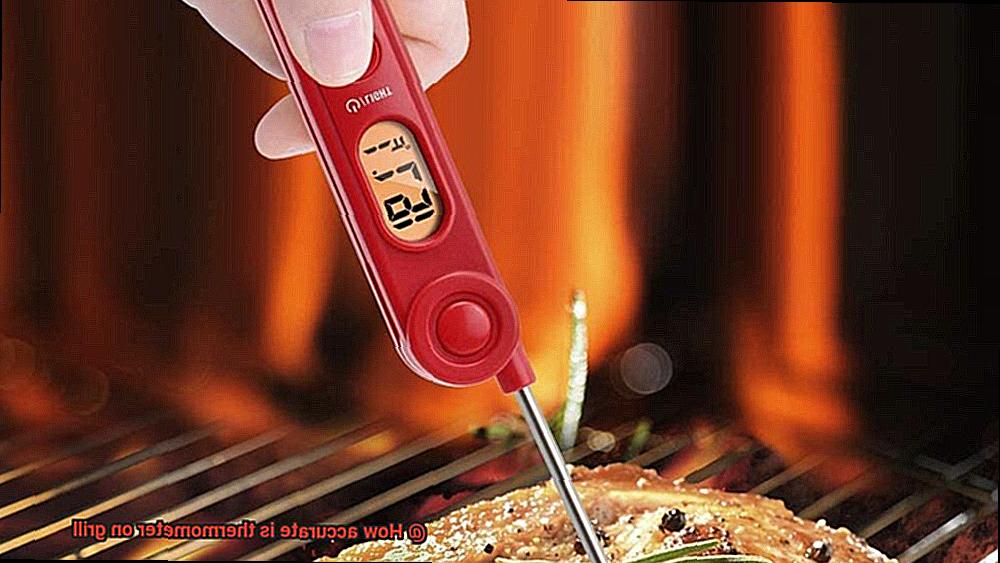
- Fill a pot with water and bring it to a boil
- Insert your thermometer into the boiling water
- Wait for it to stabilize and note the temperature reading
- Fill a glass with ice and water
- Insert your thermometer into the ice water
- Wait for it to stabilize and note the temperature reading
- Adjust the calibration nut until the thermometer matches the correct temperature readings from the boiling water and ice water tests
Weather Conditions and Their Impact
Before you fire up that grill, it’s crucial to understand how different weather conditions can impact the accuracy of your thermometer. After all, nobody wants to serve undercooked chicken or overdone steaks.
Wind is one of the grill thermometer’s toughest opponents, as it has the potential to cause hot air to move around, resulting in an inaccurate reading. The wind cools down the surface of the grill and may cause it to register a lower temperature than the actual one. So, if it’s windy outside, try to shield your grill from the wind as much as possible.
Rain or snow can also impact the accuracy of your thermometer. Water on the surface of the grill cools it down and reduces heat transfer, resulting in an inaccurate reading. Additionally, water droplets on the thermometer’s surface can reflect sunlight onto it, leading to an incorrect reading. If it’s raining or snowing outside, cover your grill with a waterproof cover.
Humidity is another factor that can affect how efficiently heat transfers from your grill to your food. High humidity levels can result in longer cooking times or undercooked food. Furthermore, high humidity levels may cause condensation on the thermometer’s surface, leading to an inaccurate reading. If you live in a humid climate, consider investing in a thermometer with a humidity-resistant coating.
Extreme temperatures can also impact the accuracy of your grill thermometer. High temperatures can cause metal to expand and contract, leading to an inaccurate reading. Similarly, low temperatures can cause metal to contract and become less sensitive, resulting in an inaccurate reading. If you’re grilling in extreme temperatures, be aware of their potential impact on your thermometer’s accuracy.
Quality of the Grill Thermometer
Fear not, for I am here to provide some expert insights on what makes a quality grill thermometer.
First and foremost, the construction material is crucial. A high-quality thermometer is typically constructed from durable stainless steel, which is resistant to rust and corrosion. Conversely, low-quality thermometers are often made from flimsy materials like plastic or aluminum, which can easily break or wear out over time. Investing in a durable thermometer will save you money in the long run and ensure that your food is cooked to perfection.
Calibration accuracy is another critical factor in determining the quality of a grill thermometer. An accurately calibrated thermometer is essential for cooking meat and poultry safely and preventing foodborne illnesses. Unfortunately, some low-quality thermometers may not be calibrated correctly, leading to inaccurate temperature readings and unsafe cooking conditions.
Finally, placement matters. For consistent temperature readings throughout the cooking process, place your thermometer in a central location on the grill away from direct heat sources and cold spots. Proper placement will ensure that your food is cooked evenly and to the desired temperature.
Tips to Get Accurate Temperature Readings
Grilling can be a fantastic way to cook your food, but it’s crucial to ensure that your food is cooked correctly. One of the best ways to guarantee that your meat is perfectly cooked is by using a thermometer. However, not all thermometers are created equal, and it’s essential to know how to get accurate temperature readings on your grill.
Tip #1: Check the thermometer’s accuracy
The first step in getting accurate temperature readings on your grill is checking the thermometer’s accuracy. To do this, use boiling water or ice water to check if it reads 212°F or 32°F, respectively. You should calibrate the thermometer if it doesn’t read these temperatures to ensure that you get accurate readings.
Tip #2: Use the right thermometer for the job
Using the right thermometer for the job is critical when grilling. Instant-read thermometers are great for checking the temperature of thinner cuts of meat, while probe thermometers are better for thicker cuts. Using the wrong thermometer can lead to inaccurate temperature readings and undercooked or overcooked meat.
Tip #3: Know where to place the thermometer
Placing the thermometer in the right spot is crucial to getting accurate temperature readings. When grilling large pieces of meat, it’s best to insert the thermometer into the thickest part of the meat without touching any bones. Placing the thermometer in an incorrect position can give you false readings and lead to undercooked or overcooked meat.
Tip #4: Keep the lid closed
Another critical aspect of getting accurate temperature readings is keeping the grill lid closed as much as possible. This helps maintain a consistent temperature inside the grill, ensuring that your thermometer readings are accurate. Opening the lid frequently can cause fluctuations in temperature, leading to inaccurate readings.
Tip #5: Be patient
Finally, when taking temperature readings, patience is key. It’s vital to let your meat rest for a few minutes after removing it from the grill before taking a reading. This allows time for the juices to redistribute and ensures that you get an accurate reading. Rushing this process can result in inaccurate temperature readings and unevenly cooked meat.
0naxbMNyzA0″ >
Conclusion
In summary, a grill thermometer is a must-have tool for any grilling aficionado who desires to achieve optimal doneness and guarantee food safety. However, not all thermometers are created equal, and their accuracy can be influenced by various factors such as placement, calibration, weather conditions, and the quality of the thermometer.
To obtain precise temperature readings on your grill, it is crucial to use a high-quality thermometer that is made of durable materials such as stainless steel. Calibration also plays a significant role in obtaining accurate readings; thus, you should frequently check your thermometer’s accuracy using boiling water or ice water. Proper placement of the thermometer in the thickest part of the meat or fish being grilled is essential for accurate temperature readings.
Weather conditions like wind, rain or snow can impact the precision of your grill thermometer. Extreme temperatures can also affect its accuracy. Therefore it’s vital to shield your grill from wind or cover it during rain or snowfall.
Lastly, patience is key when taking temperature readings. Allow your meat to rest for several minutes before taking a reading to ensure an accurate reading.

